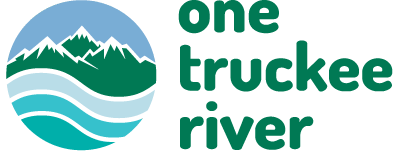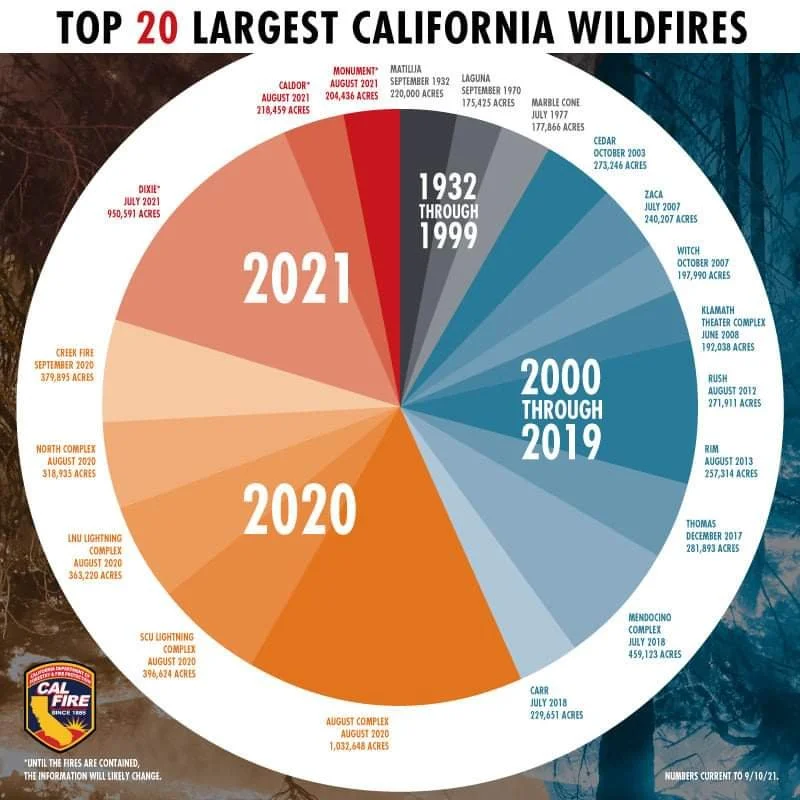Spring Firescaping Tips for a Safe Home and Healthy River
Sift through the Cal Fire website, and you’ll see at the bottom of the page their offer of a short and to-the-point “2022 Fire Season Outlook.” Doesn’t look very good:
“Extended dryness originating from January is expected to continue into the spring with little precipitation leaving most of the state in moderate to extreme drought conditions prior to summer. These continued dry conditions with above normal temperatures through Spring will leave fuel moisture levels lower than normal, increasing the potential for wildland fire activity.”
This is concerning. Yet, there are lots of things we can all do to reduce fire risk in the coming season. That’s why we’re here to give you some easy spring firescaping tips to protect your home and the Truckee River!
Why does it matter?
The past few smokey summers in the Truckee Meadows show that fire prevention is important for our region. And if we consider the trend of the past few years and the predictions for the following wildfire season, it makes sense to be proactive. And the “season” has now widened to pepper an entire year. Consider the wildfire that broke out in the area between Denver and Boulder, Colorado on December 30th of 2021. December 30th. No one would have ever imagined a wildfire in the dead of winter. . . in Coloradono less, but dwindling precipitation rates combined with wind in the arid west are making the unimaginable, heartbreakingly, a reality.
Caption: Large plumes of smoke are visible over Superior, CO on Dec. 1, 2021. Credit: Wikipedia
What’s the local situation?
Here in the Truckee Meadows we are ecologically connected to California, and fire reminds us of that every summer. We are at the mercy of both wind and fires coming down from the Sierras. Embers can travel long distances, posing a threat to the sagebrush steppe surrounding us. If you have not considered the value of firescaping or fire preparedness before, we hope this blog post will spark some reconsideration.
See this chart from Cal Fire:
The fire seasons of the last two years have been devastating:
In 2020, the August Complex fire became known as the first “gigafire,” consuming more than 1 million acres. One year later, the Dixie Fire weighed in at just under 1 million acres as a “megafire.” How dainty.
“All but 3 of the top 20 largest wildfires in California have occurred since 2000, with 3 occurring in the early season of 2021.” (CalFire)
We all have dealt with the smoke and ash-filled air of the last two summers. And many in our community have dealt with evacuations or lost their homes, even within City of Reno limits (Pinehaven Fire in 2020).
What are the watershed impacts?
Wildfires are a natural part of our regional ecosystem’s health, but these large scale fires can disrupt the delicate balance, rendering the affected areas as burn scars and unable to regenerate in a timely, natural manner. Wildfire also degrades water quality with sediments, ash, and other contaminants that can wash off burn areas and into our river, the Truckee, and therefore our precious fresh water supply.
How do we reduce our risks?
As a community lots of work is being done in the Truckee River Watershed to reduce the risk of large wildfires that could affect our local water quality.
One Truckee River is a partnership of organizations all working together to protect the Truckee River. One of our partners, The Nature Conservancy (TNC), has been collaborating on fuel reduction projects in the middle Truckee River watershed.
Under a participating agreement with the Humboldt-Toiyabe National Forest, Carson Ranger District, TNC is contracting for fuels reduction projects in the Dog Valley Planning Area. They currently have contracts for fuels reduction treatments on 1,578 acres, of which 996 acres have been completed. Work began in April to complete the remaining area.
TNC, Truckee Meadows Water Authority, the National Forest Foundation, and others have partnered to fund implementation of the Ladybug Forest Health and Fuels Reduction Project on the Tahoe National Forest. The project includes treatments on approximately 2,500 acres of the Tahoe National Forest that drain to Stampede Reservoir, which is a major reservoir for Truckee Meadows drinking water supplies.
To date, TNC implemented fuels reduction treatments on approximately 600 acres of its Independence Lake Preserve. Recently, TNC’s Timber Harvest plan for the remaining 1,600 acres of the property was completed and approved, and treatments will resume as soon as conditions allow.
What can I do?
Firescaping your home is a powerful way to safeguard you and loved ones from fire, while also helping to protect the local watershed. Here are a few firescaping tips to consider while doing spring cleaning in your yard. With National Wildfire Preparedness Day right around the corner on May 7th, why wait?
Tip #1: Clean your gutters
Caption: Leaves can accumulate in gutters and easily ignite your roof if embers blow in. Cleaning them out in the early spring can reduce this fire risk. Credit: Pixabay 123switch
Tip #2: Remove leaves, dead plants, and other flammable materials from within 5' of your foundation
Caption: The immediate zone located 0-5 feet from your home is critical for fire protection. In this zone, prioritize removing all flammable materials, such as leaves, dead plants, and wood piles. Credit: NFPA Firewise USA
Tip #3: Trim tree branches that overhang your roof and keep dead branches 10 feet from your roofline.
Need help disposing of these materials? Look for Truckee Meadows Fire Protection District green waste collection days (https://tmfpd.us/2022/03/03/are-you-ready-for-wildfire-season-locations-for-truckee-meadows-fire-rescue-spring-2022-green-waste-collection/ ) or contact your local fire department.
For more information regarding firescaping, see our previous blog post: Firescaping and UNR Extension’s Living With Fire Program: https://www.livingwithfire.com/
Resources
Choosing the Right Plants for Northern Nevada High Fire Hazard Areas
River Friendly Landscaping Blog Post: https://www.onetruckeeriver.org/blog/serious-about-sediments
Wildfires: How Do they Affect Our Water Supply? https://www.epa.gov/sciencematters/wildfires-how-do-they-affect-our-water-supplies#:~:text=Water%20supplies%20can%20be%20adversely,retains%20water%20is%20 burned%20away.
River Friendly Landscaping Blog Post: Firescaping
https://www.nytimes.com/2021/12/31/us/colorado-wildfires.html
Kent, Douglas. Firescaping: Protecting your Home with a Fire-Resistant Landscape. 2nd edition, 2020 by Wilderness Press





